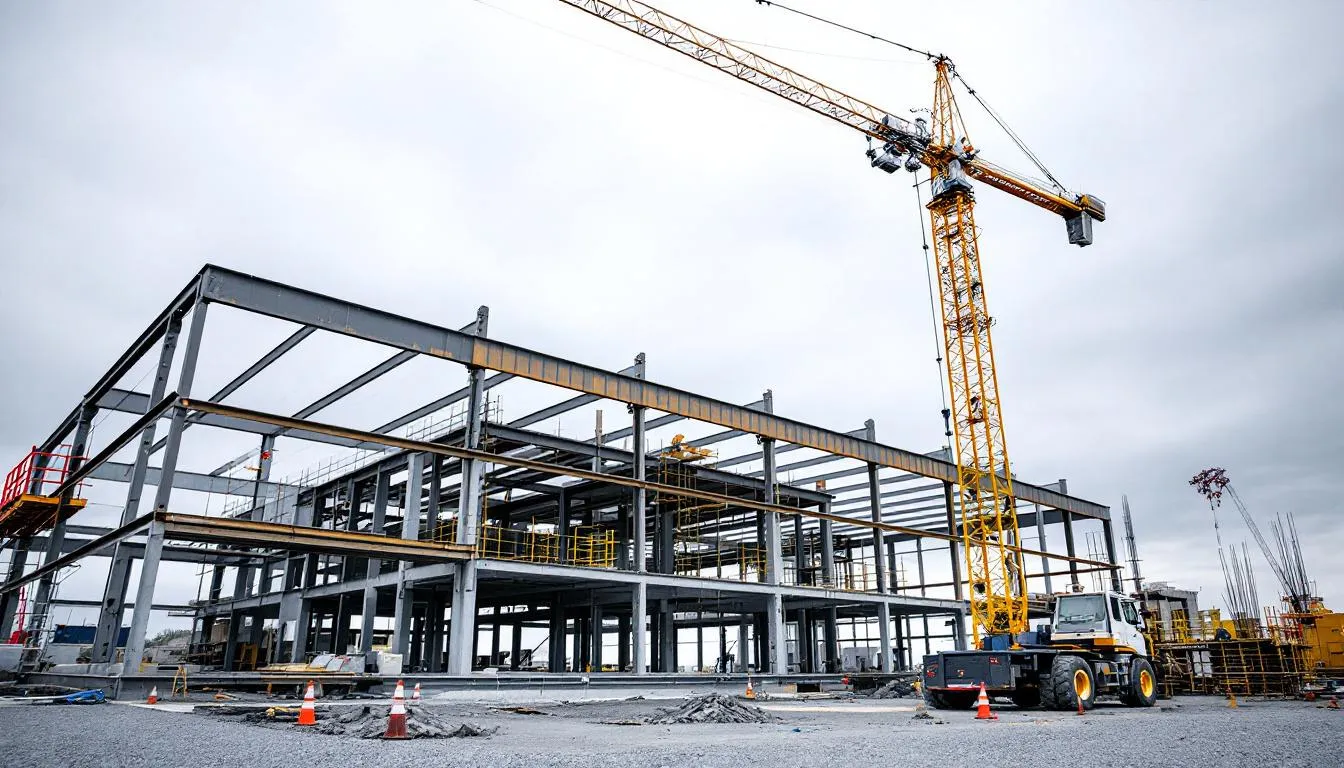In most professions, skilled practitioners expect fair compensation for their expertise. Yet architecture has become an industry where talented workers routinely accept fees that barely cover operational costs, creating a culture where surviving on shoestring budgets is normalized rather than questioned. This practice of undercutting—deliberately pricing services below sustainable market rates—has become so entrenched that many firms view it as the only way to remain competitive.
The definition of undercutting in architecture extends beyond simple competitive pricing. It involves systematically undervaluing the labor, expertise, and time needed for quality design, documentation, and project delivery. When companies implement pricing strategies that fail to account for true overhead costs, regulatory requirements, or fair compensation for employees, they contribute to an industry-wide devaluation of architectural services.

How Undercutting Became the Norm
The architectural profession’s race to the bottom didn’t happen overnight. Competitive bidding pressures consistently push firms to offer the lowest possible fee rather than demonstrate the best service value. This shift fundamentally changed how clients evaluate architectural services, reducing complex design work to a commodity where price becomes the primary differentiator.
The deregulation of architectural fees played a crucial role in this transformation. When professional organizations like the RIBA and AIA were forced to drop mandatory minimum fee schedules due to antitrust concerns, the market immediately experienced downward pressure. Without established guidelines, practices found themselves competing in an environment where undercutting became not just possible, but often necessary for survival.
Clients began perceiving architects as largely interchangeable, failing to understand the nuanced differences in approach, experience, and value that different firms bring to projects. This commoditization of design services made it easier for clients to focus solely on cost rather than considering the long-term benefits of working with properly compensated teams.
The economic reality facing many firms, especially smaller practices, created a vicious cycle. Younger firms often undercut established companies to win projects and gain exposure, unintentionally dragging down market rates across entire regions. These emerging practices, lacking experience in calculating true project costs, frequently discover too late that their winning bids leave insufficient resources for quality work.
The “survival mode” mentality that emerged post-2008 recession entrenched these bad habits industry-wide. When construction spending plummeted and projects became scarce, firms that previously maintained sustainable pricing suddenly found themselves competing against practices willing to work for any fee that covered basic overhead. This crisis-driven decision making established new market expectations that persisted long after economic conditions improved.
The Hidden Cost of Low Fees
For Firms
When architectural firms consistently work with margins so thin they cannot support fair wages or proper resources, the entire business model becomes unsustainable. Companies facing constant pressure to take on too many projects just to stay afloat find themselves unable to deliver the quality service their clients deserve.
The ripple effects extend throughout firm operations. Reduced investment in innovation, technology, and staff development creates a downward spiral where practices become less competitive over time. Essential infrastructure improvements get delayed, training programs get cut, and the workplace culture suffers as everyone scrambles to meet unrealistic deadlines with insufficient resources.
Many firm leaders report that undercutting forces them to choose between maintaining professional standards and keeping their businesses operational. This impossible choice often leads to cutting corners in ways that compromise both project quality and employee well being. The focus shifts from creating excellent architecture to simply surviving the next billing cycle.
For Employees
The human cost of undercutting manifests most directly in the daily lives of architectural workers. When firms cannot afford to pay fair compensation, employees face longer hours with no overtime pay, creating unsustainable work-life balance expectations. This chronic overwork leads to burnout, professional stagnation, and high turnover rates that further destabilize project teams.
The limited mentorship and creative opportunity that results from survival-driven workplace culture particularly harms emerging professionals. Junior architects lose access to the guidance and collaborative environment essential for professional development when senior staff are overwhelmed with back-to-back deadlines.
Career advancement becomes nearly impossible when firms lack the resources to invest in employee growth. Workers find themselves trapped in positions where their skills stagnate, making it difficult to command higher salaries or transition to better opportunities. This cycle drives talented individuals away from architecture toward industries that offer more sustainable career paths.

For Clients and Society
While clients might initially benefit from lower upfront costs, undercutting ultimately produces poorer design outcomes and reduced quality of service. When architectural teams are under-resourced and overextended, attention to detail suffers, and innovative solutions become impossible to develop or implement.
The pressure to work within impossibly tight budgets often leads to corners being cut on safety considerations, detailed coordination, or sustainability features. These shortcuts may not be immediately apparent but can result in significant long-term costs through maintenance issues, operational inefficiencies, or even safety problems.
Perhaps most concerning is how undercutting contributes to the devaluation of architecture as a respected professional service. When the public sees architectural work priced as a commodity, it becomes harder to maintain the profession’s status as essential to creating healthy, functional, and beautiful built environments.
Why Undercutting Persists
Understanding why this destructive pattern continues requires examining both cultural and structural issues within the architectural profession. Many architects see themselves as artists first and businesspeople second, leading to discomfort with assertive pricing strategies or business negotiations. This cultural bias toward creative fulfillment over financial sustainability makes it easier for firms to rationalize working for inadequate fees.
The lack of business training in most architectural education programs leaves many practitioners unprepared for the financial realities of running a practice. Without proper understanding of overhead calculations, profit margins, or negotiation strategies, even well-intentioned firms may inadvertently undercut themselves through poor business decisions.
Fear of losing projects drives many firms to undercut rather than risk periods without active work. This anxiety-driven decision making fails to account for the long-term costs of unsustainable pricing, focusing instead on immediate cash flow needs. Firms often convince themselves that accepting low-fee projects will “keep them visible” in the market, not recognizing how this damages their ability to command fair prices for future work.
The client education gap represents another significant barrier to fair pricing. Most clients genuinely do not understand what goes into architectural fees or why quality design requires adequate compensation. Without this understanding, they naturally gravitate toward the lowest bid, not realizing how undercutting can compromise their project outcomes.
The profession’s weak collective voice compounds these individual challenges. Without standardized fee guidelines, strong union representation, or coordinated industry leverage, individual firms struggle to resist downward pricing pressure even when they understand its negative consequences.

Breaking the Cycle: What Needs to Change
Industry-Level Solutions
Reintroducing recommended fee guidelines through professional bodies represents a crucial first step toward industry reform. While mandatory minimum pricing may violate antitrust laws in some regions, professional organizations can provide guidance, educational resources, and benchmarking data that help both practitioners and clients understand appropriate pricing levels.
Collective action through unions, professional alliances, or regional architectural groups can create the leverage necessary to set sustainable industry standards. When firms coordinate their approach to pricing and contract terms, they can resist the downward pressure that individual practices cannot overcome alone.
Public campaigns to educate clients about the true value and scope of architectural work help address the fundamental knowledge gap that enables undercutting. These efforts must clearly communicate what architectural services include, why proper compensation matters, and how adequate fees translate into better project outcomes.
Encouraging transparent salary reporting and fee benchmarking across the industry creates accountability and helps firms understand market standards. When pricing information becomes more accessible, both practitioners and clients can make better-informed decisions about fair compensation levels.
Firm-Level Practices
Successful firms increasingly focus on pricing based on value rather than just hours, communicating the tangible outcomes and long-term benefits that good design provides. This approach requires developing the skills and confidence to articulate architectural value in terms that clients understand and appreciate.
Learning to say no to exploitative contracts becomes essential for breaking the undercutting cycle. Firms must develop the financial stability and business confidence to value quality work over volume, even when this means turning away projects that do not meet minimum sustainability requirements.
Building long-term client relationships founded on trust and respect for fair compensation creates a more stable business model than constantly competing for new work on price alone. These ongoing relationships allow firms to demonstrate value over time and command appropriate fees for their expertise.
Training firm leaders in business literacy and financial planning ensures that pricing decisions are based on accurate cost calculations and sustainable profit margins. This education must cover not just project costs but also overhead, taxes, benefits, and the infrastructure necessary for long-term business health.
Individual Actions
Architecture professionals at all levels can contribute to changing industry culture by learning how fees are structured and developing confidence in discussing compensation. This knowledge helps workers understand when they are being underpaid and gives them the tools to advocate for fair treatment.
Supporting peers and refusing to normalize unpaid overtime creates workplace expectations that prioritize employee well being over unsustainable productivity demands. When workers collectively reject exploitative conditions, firms are forced to develop more sustainable business practices.
Individual advocacy becomes powerful when professionals refuse to accept or perpetuate undercutting in their own careers. This might mean negotiating for fair salary increases, refusing to work unpaid hours, or choosing employers who demonstrate commitment to sustainable business practices.

A Path Toward Fair Compensation
The connection between fair pricing and positive outcomes extends far beyond individual firm profitability. When architectural practices can afford to pay competitive salaries, invest in professional development, and maintain reasonable workloads, the entire profession benefits through improved retention, innovation, and public reputation.
Fair compensation supports the diversity and accessibility that the profession desperately needs. When architecture becomes a career path that only those with financial privilege can afford to pursue, the industry loses essential perspectives and talent. Sustainable pricing helps ensure that skilled professionals from all backgrounds can build successful careers in architecture.
The industry must redefine its narrative around value, positioning architectural expertise as essential rather than optional. This transformation requires consistent messaging that emphasizes the connection between adequate fees, quality outcomes, and long-term value creation for clients and communities.
Raising fees is not about greed—it is about protecting the integrity and future of a profession that shapes the built environment for generations. When architects are fairly compensated for their expertise, they can focus on creating buildings and spaces that truly serve human needs rather than simply meeting minimum requirements within impossible budgets.
Frequently Asked Questions
Why do architects charge such different fees for similar projects?
Architectural fees vary significantly based on project complexity, firm experience, regional market conditions, and scope of services included. Some firms undercut by excluding essential services like construction administration or detailed coordination, while others include comprehensive support throughout the entire project lifecycle. Clients should compare the full scope of services rather than just the bottom-line fee to understand true value.
Are clients willing to pay more for quality design?
Research shows that informed clients who understand the connection between adequate fees and project success are generally willing to invest in quality architectural services. However, many clients lack education about what architectural work entails and how undercutting compromises outcomes. Successful firms invest time in client education to demonstrate the long-term value of proper design investment.
How do low fees affect project quality and safety?
Inadequate fees force firms to reduce time spent on critical activities like code research, construction document review, and site observation. This can lead to design errors, coordination problems, and safety issues that become apparent only during or after construction. Projects with properly compensated architectural teams typically experience fewer change orders, delays, and performance problems.
Can professional organizations set minimum fee standards again?
While mandatory minimum fees may violate antitrust laws in some regions, professional organizations can provide guidance, educational resources, and recommended fee calculation methods. Some countries maintain fee schedules through different legal structures, and there is ongoing discussion about how to protect professional compensation while complying with competition law.
What can small firms do to compete without undercutting?
Small firms can differentiate themselves through specialization, exceptional service, local market knowledge, or innovative approaches rather than competing solely on price. Building strong client relationships, developing niche expertise, and clearly communicating value propositions help smaller practices command fair fees despite competition from larger organizations.
The post The Cost of Undercutting: How Low Fees and Shoestring Budgets Hurt Architects first appeared on jobs.archi.


